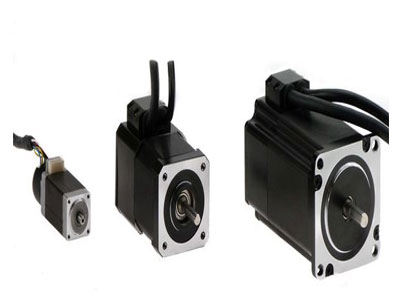Key Takeaway
The typical lifespan of a servo motor is between 20,000 and 30,000 hours, though it can vary based on its application and operating conditions. Factors such as the environment, load, and maintenance all play a role in determining how long a servo motor lasts. For instance, motors operating in hot, dusty, or humid conditions tend to have shorter lifespans.
Regular maintenance is key to extending a servo motor’s life. By keeping the motor clean, lubricating its moving parts, and performing routine inspections, you can ensure it operates efficiently. With proper care, a servo motor can last well beyond its average lifespan, potentially serving for decades in optimal conditions.
Average Lifespan of Different Types of Servo Motors
The average lifespan of a servo motor varies depending on the type, but it typically ranges from 20,000 to 30,000 hours of operation. AC servo motors, which are commonly used in industrial applications, tend to have a longer lifespan than DC servo motors, due to their ability to handle higher currents and better heat dissipation. Brushless motors also have an edge in terms of longevity compared to brushed motors, as they have fewer components that experience wear and tear, such as brushes and commutators.
However, the specific lifespan of a motor can vary based on its application and operating environment. Some motors can last well beyond their expected life with proper care, while others may wear out more quickly if subjected to harsh conditions or poor maintenance.

Factors That Affect the Lifespan of a Servo Motor
Several factors impact the lifespan of a servo motor, and understanding these can help you take steps to extend its operational life. One major factor is the operating environment. Servo motors exposed to high temperatures, dust, moisture, or corrosive substances will wear out faster. Additionally, electrical factors such as voltage fluctuations or overcurrent situations can cause internal damage to the motor’s components, reducing its lifespan.
Mechanical wear is another concern. Components like bearings, shafts, and gears experience wear over time, especially when subjected to high loads or continuous operation. The level of vibration and shock the motor is exposed to also plays a role. Frequent start-stop cycles or rapid acceleration and deceleration can put additional strain on the motor’s mechanical parts. Being aware of these factors allows you to monitor and adjust the operating conditions to ensure the motor lasts as long as possible.
How Usage Patterns Impact Motor Life
The way a servo motor is used has a direct impact on its lifespan. Continuous use at or near its maximum rated load will cause the motor to wear out faster than if it operates under moderate loads. Operating at high speeds for extended periods can also result in overheating, which reduces the efficiency of the motor and leads to premature failure. On the other hand, motors that operate intermittently, with regular downtime for cooling, tend to last longer.
Inconsistent usage patterns, such as frequent starts and stops, can put additional stress on both the mechanical and electrical components of the motor. This stress is particularly pronounced when the motor is constantly subjected to varying loads or speeds. Monitoring the motor’s workload and ensuring it operates within its rated capacity are key to extending its life. By avoiding excessive loads and allowing for adequate cooling periods, you can maximize the longevity of the motor.
Best Practices to Extend Servo Motor Life
To get the most out of your servo motor, regular maintenance is essential. One of the simplest yet most effective practices is keeping the motor clean. Dust and debris can accumulate in the motor’s vents and cooling systems, leading to overheating. Regular cleaning and ensuring proper ventilation will help prevent this. Additionally, routine lubrication of moving parts, particularly bearings, can significantly reduce mechanical wear.
It’s also important to monitor the motor’s electrical parameters. Regularly checking for voltage fluctuations, ensuring stable power supply, and using proper overcurrent protection devices can prevent electrical damage. Performing regular inspections to detect early signs of wear, such as unusual noises or vibrations, will allow you to address minor issues before they escalate into major problems. Following these maintenance practices will help extend the life of your servo motor and keep it operating efficiently.
How to Plan for Servo Motor Replacement
No matter how well a servo motor is maintained, it will eventually reach the end of its useful life. Knowing when to replace the motor is crucial for avoiding unexpected downtime. Planning for motor replacement involves keeping track of its operational hours and considering how long it’s been in service. A motor that’s nearing the upper end of its expected lifespan may still function, but its performance could degrade, leading to inefficiencies or unexpected breakdowns.
If you notice increased noise, vibration, or a drop in performance, these are signs that the motor may be nearing the end of its life. Rather than waiting for a complete failure, which could lead to production delays, plan for a timely replacement. By having a replacement motor ready or scheduled, you can ensure a smooth transition with minimal disruption to your operations.
Conclusion
Maximizing the lifespan of a servo motor requires a combination of careful monitoring, regular maintenance, and understanding the factors that contribute to wear. By controlling the motor’s environment, ensuring stable operating conditions, and following best practices, you can extend its life and ensure reliable performance. Planning for eventual replacement is also crucial for minimizing downtime and avoiding costly failures. With proper care and foresight, your servo motor can continue to serve your operations efficiently for many years.
